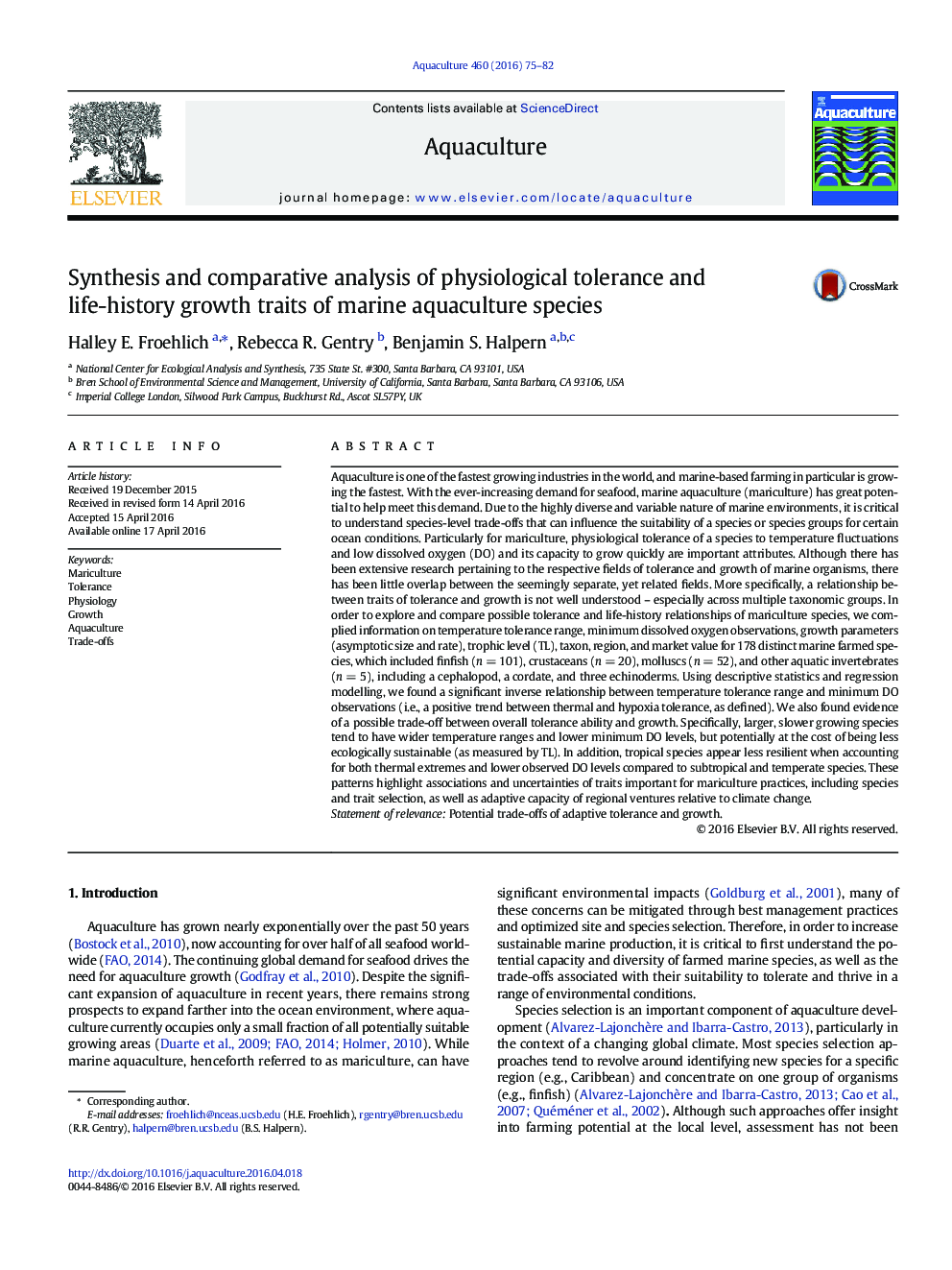| کد مقاله | کد نشریه | سال انتشار | مقاله انگلیسی | نسخه تمام متن |
|---|---|---|---|---|
| 2421399 | 1552827 | 2016 | 8 صفحه PDF | دانلود رایگان |
• Trade-offs of thermal and minimum dissolved oxygen tolerance and growth traits of marine aquaculture species were evaluated.
• Temperature tolerance range and minimum dissolved oxygen observations were significantly, inversely correlated.
• Larger, slowing growing species tended to be overall more tolerant.
• Tropical species showed reduced capacity to withstand a wider range of temperatures and lower oxygen levels simultaneously.
Aquaculture is one of the fastest growing industries in the world, and marine-based farming in particular is growing the fastest. With the ever-increasing demand for seafood, marine aquaculture (mariculture) has great potential to help meet this demand. Due to the highly diverse and variable nature of marine environments, it is critical to understand species-level trade-offs that can influence the suitability of a species or species groups for certain ocean conditions. Particularly for mariculture, physiological tolerance of a species to temperature fluctuations and low dissolved oxygen (DO) and its capacity to grow quickly are important attributes. Although there has been extensive research pertaining to the respective fields of tolerance and growth of marine organisms, there has been little overlap between the seemingly separate, yet related fields. More specifically, a relationship between traits of tolerance and growth is not well understood – especially across multiple taxonomic groups. In order to explore and compare possible tolerance and life-history relationships of mariculture species, we complied information on temperature tolerance range, minimum dissolved oxygen observations, growth parameters (asymptotic size and rate), trophic level (TL), taxon, region, and market value for 178 distinct marine farmed species, which included finfish (n = 101), crustaceans (n = 20), molluscs (n = 52), and other aquatic invertebrates (n = 5), including a cephalopod, a cordate, and three echinoderms. Using descriptive statistics and regression modelling, we found a significant inverse relationship between temperature tolerance range and minimum DO observations (i.e., a positive trend between thermal and hypoxia tolerance, as defined). We also found evidence of a possible trade-off between overall tolerance ability and growth. Specifically, larger, slower growing species tend to have wider temperature ranges and lower minimum DO levels, but potentially at the cost of being less ecologically sustainable (as measured by TL). In addition, tropical species appear less resilient when accounting for both thermal extremes and lower observed DO levels compared to subtropical and temperate species. These patterns highlight associations and uncertainties of traits important for mariculture practices, including species and trait selection, as well as adaptive capacity of regional ventures relative to climate change.Statement of relevancePotential trade-offs of adaptive tolerance and growth.
Journal: Aquaculture - Volume 460, 1 July 2016, Pages 75–82
